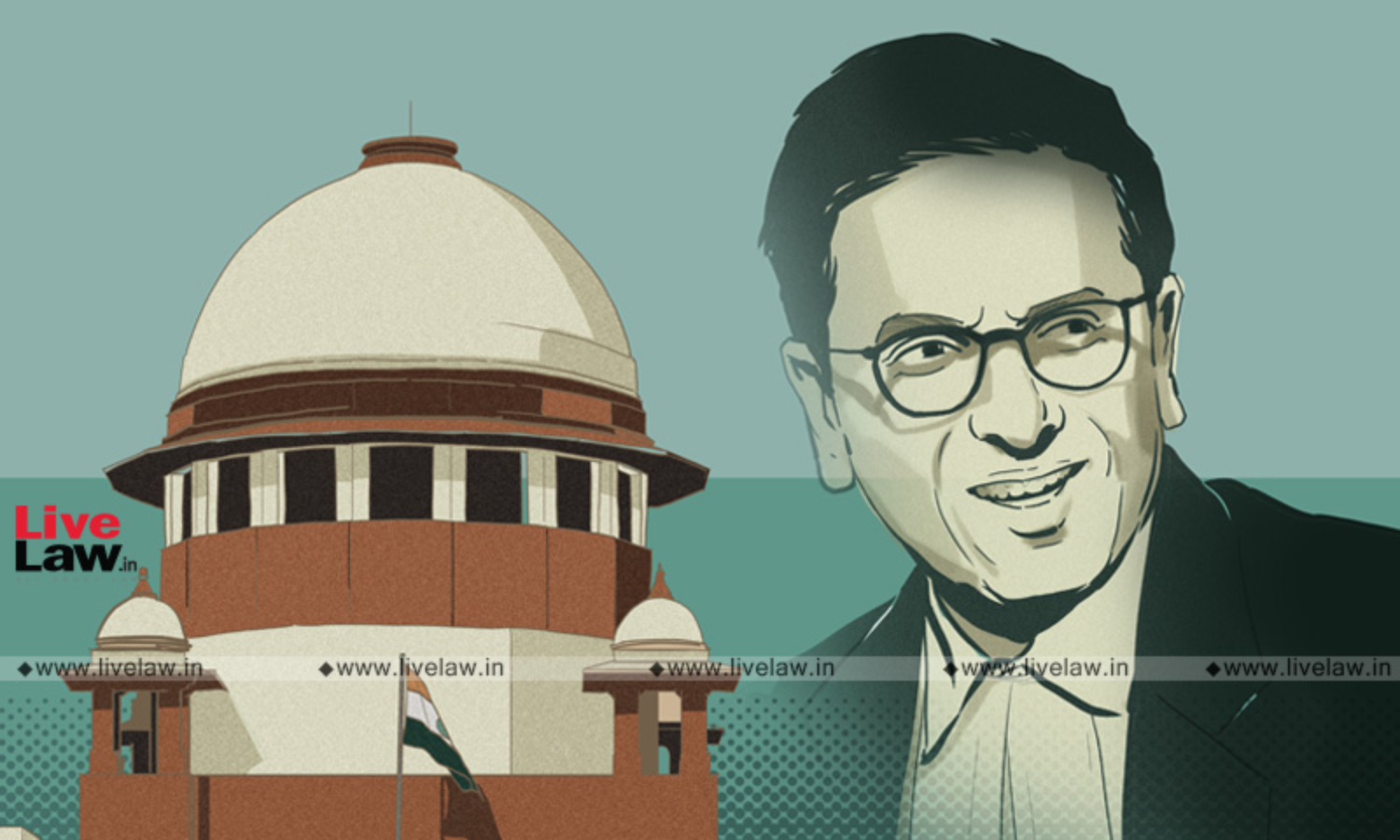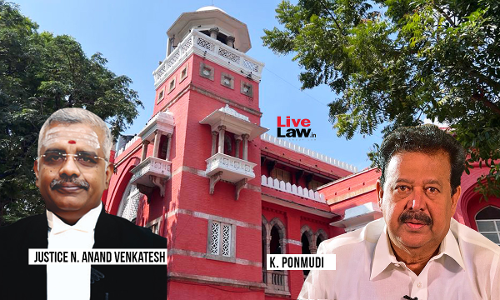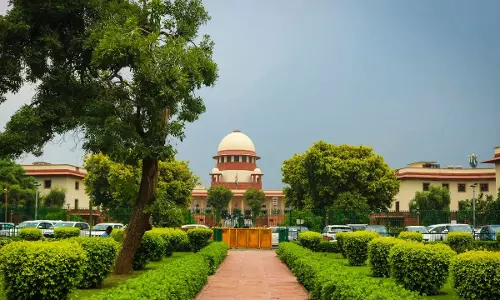Virtual Platforms Have Enabled Supreme Court To Be Truly A 'National Court': Justice DY Chandrachud

Dr. Justice Dhananjaya Y. Chandrachud joined an event organised by the High Court of Orissa to inaugurate e-filing 3.0 for the High Court and District and Subordinate Courts of the State, Vulnerable Witness Deposition Centres with Virtual Courtrooms in District Court Establishments and Odisha Judicial Workflow Automation System (OJWAS) for paperless office in...
Dr. Justice Dhananjaya Y. Chandrachud joined an event organised by the High Court of Orissa to inaugurate e-filing 3.0 for the High Court and District and Subordinate Courts of the State, Vulnerable Witness Deposition Centres with Virtual Courtrooms in District Court Establishments and Odisha Judicial Workflow Automation System (OJWAS) for paperless office in the High Court.
Justice Chandrachud appreciated the efforts made by the Chief Justice of Orissa High Court Dr. Justice S. Muralidhar for digitalisation of Courts in the state. He said that the initiatives which are unveiled today are clear indicators of what a person at the helm can do to move the system. He also expressed his pleasure for the governmental support for the initiatives.
He said that digitalisation of Courts is a bipartisan effort, i.e. efforts both by the state government and state judiciary. He categorically said that though judicial functions should remain aloof from government, yet at the administrative side, the mission is common for both the wings.
Need to Adapt Technology:
Talking about e-filing and inauguration of Vulnerable Witnesses Deposition Centres, he said that they combine technology with the human face of justice. The beauty and strength of technology is that it is becoming simpler. The technology is as simple as simplicity can be. He stressed that the youngsters have begun with technology and they swim with it. However, it is important for senior generations of judges to change their mindset and adapt to the technology.
He reminded that as we are in the Phase III of the e-courts project, it is important to reach out to people. Technology and Courts reaching out to citizens is different from citizens reaching out to Courts. Highlighting the importance of eliminating the colonial relics, he said that though many of the Courts have colonial origin, the judiciary has transformed and continue to transform, so that citizens are able to understand that judiciary and judges are parts of their lives and not that they have to continue access the Courts through increasing complexity of procedures and law.
Important Role of Government:
Emphasizing the role of Government, he said that Government is said to be the 'largest litigant'. From a positive side, it is the largest litigant because it is the single most important dispenser of welfare benefits in our society. The role of Government has not been denuded despite the onset of privatization and the march of market economy. It is still the enforcer of law and the largest employer.
He highlighted that when state takes efforts for e-filing and digitisation of Courts, it gives vision for the future that the largest litigant and largest dispenser of welfare benefits is taking a conscious and deliberate effort to ensure that the process justice delivery becomes simplified, flexible and alive to the needs of the citizens.
On FASTER, NJDG and JustIS:
He also mentioned about the recent launch of the software 'Fast and Secure Transmission of Electronic Records' (FASTER) by the Chief Justice of India. He said, it is important that we replicate the model across the country. Further, he talked about the National Judicial Data Grid (NJDG), which archives judgments of 25 High Courts in the country and which stores data of 3,30,91,658 cases.
He expresses his vision for utilising the NJDG data through the mobile application 'JustIS'. The app is provided to judicial officers to monitor disposal and pendency at their fingertips. Various reports are also provided in print and graphical formats. Facilities for tagging important cases and making short-notes are made available. Again, the important cases are specifically marked when listed and thereby, enables judicial officers to identify important cases from causelist.
Separate versions of the app are provided to Principal District Judges and other Judicial Officers. The Principal District Judges are allowed to monitor the collective disposal of the judiciary under his control and also of individual judges. Similarly, Judicial Officers can keep track of cases under their Courts through the app. Therefore, Justice Chandrachud was optimistic about combining NJDG and JustIS mobile app, which would be helpful in tracking judicial performance.
On Live-Streaming and Video-Conferencing:
He said, though the pandemic gave impetus to technology but it was not the sole reason for introduction of technology or live-streaming of Court proceedings. However, he said that the use of virtual platforms has enabled the Supreme Court to be truly a 'National Court'. It has become a National Court in a participatory sense, wherein access to the highest Court of the land is available to every lawyer of India. Further, he expressed his pleasure and satisfaction over the fact that more young women lawyers were able to access the Apex Court because of video conferencing.
On Witness Protection:
Then, he underlined the importance of witness for survival of rule of law. Various jurisdictions in the world have given incentives to witnesses such as giving temporary residence, safe harbour etc. He pointed out the United Nations Office's Good Practices for the Protection of Witnesses in criminal proceedings involving organised crimes, which identified resettlement of such witnesses under new identity, in a new and undisclosed residence as a viable option for witness protection.
Having said that, he clarified that threat of an overt form of violation is not the only form of threat that the witnesses face. Witnesses are being subjugated and discriminated against due to their identity or their lived experiences. They need to overcome multi-access barriers and the resulting trauma to depose before the Courts. It is the responsibility of members of judiciary to tailor deposition process in an adversarial system to the needs of citizens with inhibitions.
Definition of 'Vulnerable Witness':
He pointed out that there is no legislative provision defining 'vulnerable witnesses'. Therefore, it is often assumed to mean only 'rape victims' or 'child witnesses'. He said that it is imperative to recognise other forms of vulnerable witnesses. A society established on unequal power structures, is based on multiple individuals and group identities, vulnerable witnesses therefore cannot be defined in strict terms, restricting to specific classes of individuals. It must be defined considering lived experiences of witnesses, specific to the context such as socio-economic background, age, disability, gender and multitude of other identities and their interaction with surrounding environment.
He said, having regard for such approach, the Supreme Court has expanded the definition of 'vulnerable witnesses' to include age-neutral and gender-neutral victims of sexual assault, witnesses suffering from mental illness, persons with speech and hearing or any other form of disability or those who have threat perception.
He summed up by saying, the primary purpose is to create a conducive and humanised environment for witnesses to free them of mental restrictions or impediments, which their lived experiences might have created. Hence, it should not be viewed as a means to the end of a criminal trial, rather it is an end or object or goal in itself.
The video recording of the event can be viewed here.




